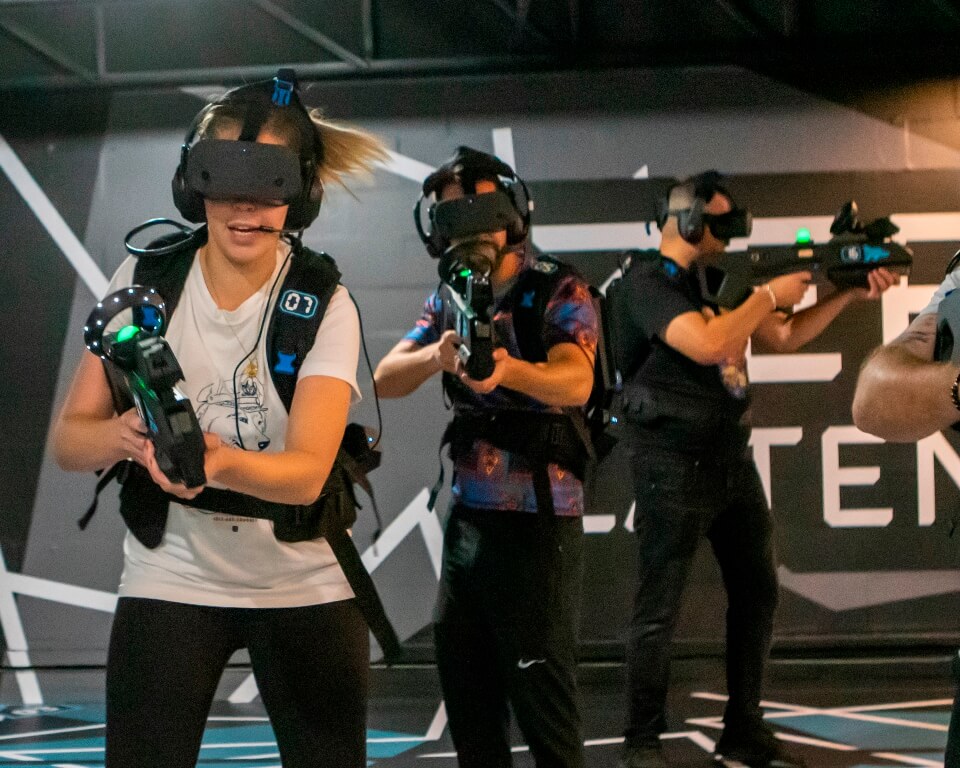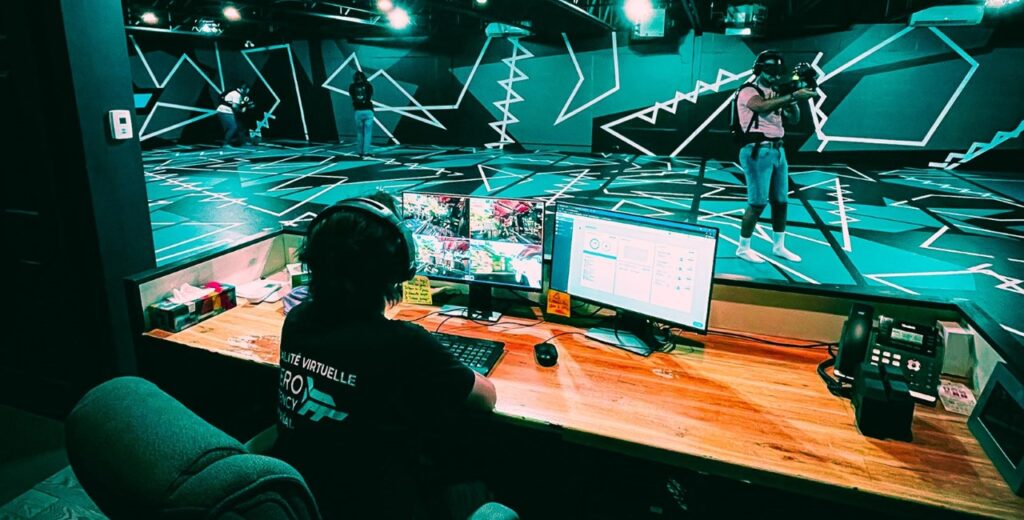Why Is Immersion Important in a Virtual Reality Game?
Published on 2023-01-10
Categories: Virtual Reality Games
Virtual reality games have taken the gaming world by storm, offering a level of interactive entertainment that has not been seen before. With the introduction of VR technology, gamers can now immerse themselves in new and exciting virtual worlds. But why is immersion so important when it comes to virtual reality games? In this article, we will explore the importance of immersive environments in order to help gamers get the most out of their VR experience.
What Is Virtual Reality (VR)?
Virtual reality (VR) is a simulated experience that can be similar to or completely different from the real world. It allows users to interact with an artificial three-dimensional environment using electronic devices, such as virtual reality headset and VR headphones. VR technology has been around for decades, but it is just recently becoming mainstream due to its potential in gaming, education and entertainment.
VR technology typically requires the use of a headset or goggles, which blocks out all external light sources, creating an immersive 3D experience. The user wears headphones allowing them to hear audio cues and sound effects associated with their virtual environment. Users are also able to interact with the virtual space through controls connected either directly to the computer or headset.
There are several types of virtual reality, from totally immersive to collaborative, and from the web to non-immersive. Virtual reality, which everyone is looking forward to, is a completely immersive option, because it’s an explorable, interactive, computer-generated 3D world that can take you to places and immerse you into scenarios that aren’t accessible for the majority of people in reality, whether it’s walking through a space station, hanging in mid-air, or being in a post-apocalyptic world.
Where Does Virtual Reality Originate?
Virtual reality as we know it today has been around for decades. As a reference, the first screen mounted on a person’s head was not the Oculus Rift, although it was the device that triggered a renewed interest in virtual reality. In fact, it was a device at the time that revolutionized the field of technology called “Headsight”, created in the 1960s.
However, there were also non-digital predecessors, from 360° images, who had the same objective: to transfer your experience to another place. Virtual reality is a highly complex technology, and not just because it has evolved so much throughout the years.
Over its 200-year history, technology has been used for a variety of things, from science and medicine, to pilot training, and helping architects show off their latest skyscraper by allowing people to walk on it, before a brick is laid.
The focus is on games these days, but virtual reality has many real-world applications, and these will continue to increase in number, as the technology continues to evolve.
What Is Immersion?
Immersion is the result of being in a foreign environment without direct contact with its original environment. In simulations, immersion can be obtained by deceiving one or more senses (usually sight and hearing, sometimes proprioception, more rarely touch, and on the rare occasion smell, etc.) to “make the brain believe” that it is in a specific medium (e.g. a simulated medium).
Thus, in a pilot simulation, immersion will consist in deceiving the user’s brain so that he imagines himself more at the controls of an airplane, rather than sitting at a desk in front of a computer. Of course, the brain is not entirely fooled, and the user always knows where he really is (if only because they remember how they wound up sitting in front of the computer, and not in the cockpit of the plane a few minutes earlier…).
However, if the immersion is sufficient, the brain eventually accepts the coexistence of the environment (real and simulated) and begins to act in the simulated environment, in the same way as it would in the equivalent real environment.
Immersion can be defined as satisfactory when the physiological responses of the user (heart rate, sweating, hypervigilance, etc.) begin to correspond more closely to the interactions with the simulated environment, than with the real environment.
What Is the Difference Between Immersion and Simulation Immersion?
Immersion is a concept that is often used to describe the experience of engaging with an activity or environment. It has been applied to many different contexts, including digital media, gaming, and even virtual reality. But what exactly is the difference between simulation immersion and traditional immersion?
Simulation immersion refers to the use of technology that simulates a certain environment or activity. This type of technology can be used for training or educational purposes, as well as for entertainment. For example, flight simulators are used in pilot training programs to create a realistic setting, in which pilots can practice flying without actually taking off into the sky.
Simulation immersion also includes things like virtual reality headsets, which allow users to explore virtual worlds with their own body movements and interactions, with other players or objects within those environments.
Traditional immersion involves engaging in an activity or environment without technological assistance.
Learning Is of Better Quality, When Active and Participatory
Using the example of a student pilot in a flight simulator, he or she can understand the effects of his or her actions on the flight, and is able to control the reflective acts of flying in a manner equivalent to what he or she would experience flying an aircraft in flight. However, the financial cost of one hour of simulator flight is much lower than that of an actual airplane, as is the risk.
The advantage of obtaining good immersion in this case, is to minimize the differences between the simulated environment and the equivalent real environment, from the perspective of the student’s brain.
Thus, to be effective, a good airplane flight simulator must put the student in a situation where their body can interact with the simulated airplane, in the same way as it would in an actual airplane:
- The controls of the airplane must have the same ergonomics (position, shape and effort required to operate them),
- Information from the simulated environment must reach the user by the same physical senses (sight, hearing, touch, proprioception, equilibrioception, etc.),
- The simulated environment must provide enough stimuli for the learner’s brain to be more concerned with interacting with the simulated environment, than with the differences between it and reality. Under these conditions, simulator training will be optimal, and will allow the individual to progress in a manner equivalent to what he
or she would achieve in flight, but at a greatly reduced cost and risk.
The second major advantage of immersion is its ability to put the person in extreme situations without endangering them.
The Importance of Immersion in VR Games
In conclusion, VR games and the immersion experience offered, are a great way to engage players in an entertaining and interactive environment. Immersion is critical for creating a believable and captivating virtual reality game. It allows developers to craft engaging stories, create a sense of presence, and provide users with an interactive and memorable experience. Immersion also allows developers to create powerful and emotive experiences, which can cause players to feel as though they are part of the story or world.



